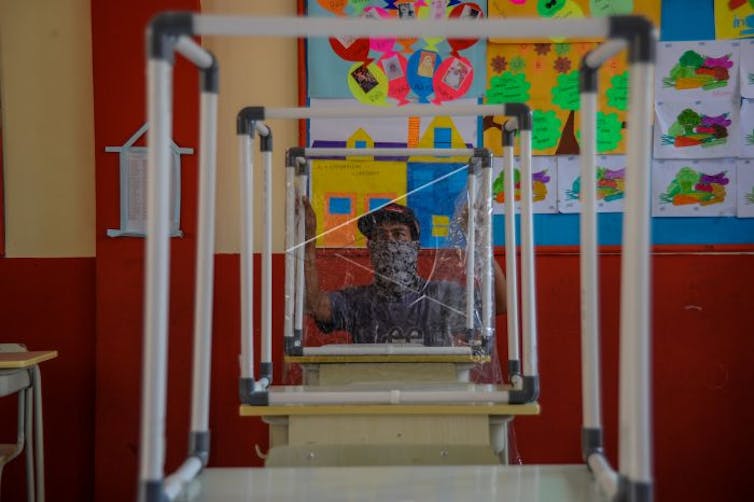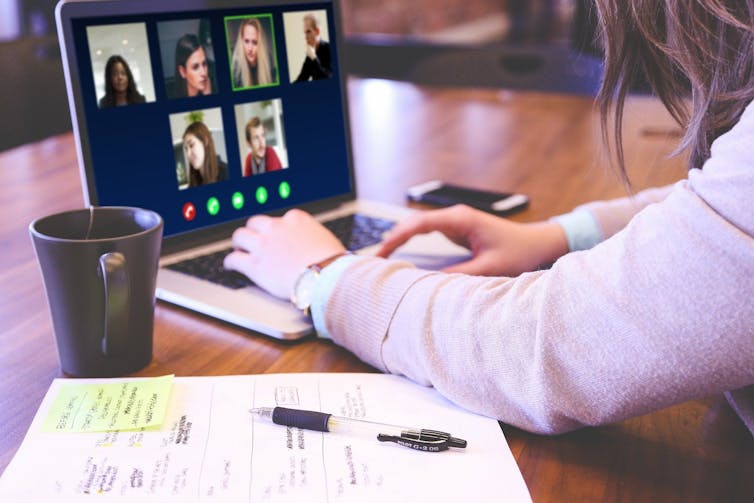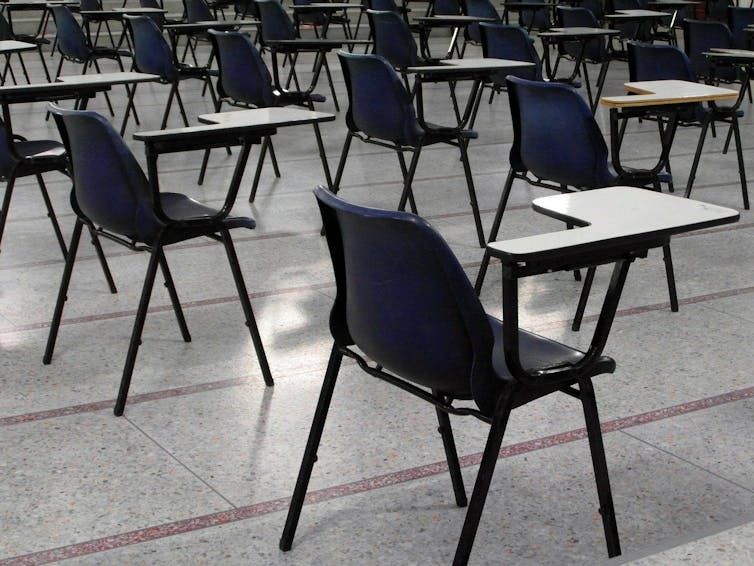School closures in Indonesia due to the COVID-19 pandemic and the shift to online learning have affected around 68 million students from pre-school to higher education levels.
One of them is 16-year-old high school student Hazel.
“We get more homework than learning materials, so we spend more time working on them. Sometimes we stay up until 11pm to reach deadlines,” she told The Conversation Indonesia recently.
Moving class online also creates an additional burden for teachers as they have to incorporate technology in their learning method, a skill not many people possess.
Other challenges for online learning include lack of internet access, poor quality of teachers’ capacity and student-parent readiness.
The Indonesian Teachers Association has proposed the use of blended learning – a mix of online (distance) and face-to-face (in-class) delivery – as a way to create an effective learning environment amid the pandemic.
Blended learning stems from technology-based education practices in the 1960s and 1970s.

The system offers a wide range of technologies, including web-based courses, live videos and conference calls. These can be used to support traditional education settings.
Several countries in Europe, such as Germany, Norway and Denmark, have started to adopt this learning method to help them conduct classes amid the pandemic. By having a mix of online and offline classes, opening schools is manageable during the pandemic.
Blended learning may work in Europe, but it still has a long way to go to be implemented in Indonesia despite its potential to reform the country’s education sector.
Challenges
European countries carried out blended learning by limiting class sizes to a maximum of 10-15 students and alternating periods of in-class learning with online learning.
During in-class learning, children stay in small groups and are assigned individual seats. Their in-class learning is also shortened to avoid COVID-19 infections.
Some argue that the use of blended learning during the pandemic can create an effective and safe learning environment because it will shorten the teaching and learning time with school materials being delivered online and offline.
However, the application of this learning method in Indonesia stills face many constraints – particularly when it comes to the online learning part.
Research suggests blended learning is an effective learning method but only if both students and teachers have the capability and experience in using the technology.
Indonesia’s digital divide presents a challenge for blended learning, as this method still rests upon online learning.

The owner of a pre-school in Cirebon, West Java, Lismah (52), has tried to implement blended learning during the pandemic. She acknowledged the difficulties in conducting online classes, with many of her students’ parents having limited technological resources.
“The students are given homework […],” she said. “The teachers remind the parents of these homework through a Whatsapp group, but we’re aware some parents don’t have mobile phones.”
Implementing blended learning in Indonesia means extra work for teachers as they are expected to master both distance and in-class teaching.
“We’re expected to work harder. We have to prepare both online and in-class learning activities. Those activities must be synchronised, so they don’t overlap each other in reaching the learning objectives,” junior high school teacher Aris (39) from Cirebon told The Conversation Indonesia.
Edi Subkhan, a lecturer in education technology and curriculum at Universitas Negeri Semarang in Central Java, also argues that schools and teachers must firstly have the capacity to implement this learning method.
“There are teachers who can follow this method because they are skilled in operating various technologies, but there are also teachers who have yet to fully understand what online or even blended learning is,” he said.
Returning to school amid the pandemic, even in a blended learning setting, can also be unsettling after a long period of separation from in-class learning.
Zamzami Zainudin, a researcher at the University of Hong Kong, explains the challenge of “recharging” students upon returning to in-class learning.
“Many students become too comfortable with distance learning because they are separated from in-class learning for a long time. So when in-class learning resumes, they need to be recharged. This becomes the teacher’s challenge to motivate them back from zero,” he said.
Another challenge to health and safety precautions during in-class learning is uncertainty as to what happens on the days when students are supposed to conduct distance learning. Around 20% of Indonesians still do not wear face masks when going outside.

Indonesia has the highest COVID-19 fatality rate in Southeast Asia with 7,417 deaths as of August 31. The country also has recorded the second-highest number of COVID-19 infections in Southeast Asia with 174,796 cases – behind Philippine’s 220,819 cases.
Rising opportunities
Though blended learning is largely at the discussion stage – with a few schools already carrying out trials – opportunities are open for blended learning to be implemented as part of education reform during the pandemic.
Teacher Aris believes that implementing blended learning during the pandemic can increase the ability of educators to conduct effective distance learning, especially in terms of using technology.
“Whether we like it or not, teachers are forced to be creative in using information technology. We have to choose which technology fits the learning activity, learn how to use it, and then evaluate how we used it to see its appropriateness in the learning setting,” he said.
Edi supports this notion. He thinks blended learning can serve as the first step towards an information and communication technology-based education system.
Given Indonesia’s lack of infrastructure, digital literacy and economic welfare, developing an education system of this kind must be taken one step at a time.
“With its flexibility in combining online and face-to-face learning, we can build an education system that doesn’t force it to be fully internet-based, because we’re also considering the social, economic and geographical context of Indonesia,” explained Edi.
Zamzami added that blended learning would also open doors for emerging technologies in Indonesia’s education sector through, for example, augmented reality and computational thinking.
“There are many emerging technologies in the field of education that Indonesia still lacks. Blended learning is the most simple form of technology that we can start with,” he said.




